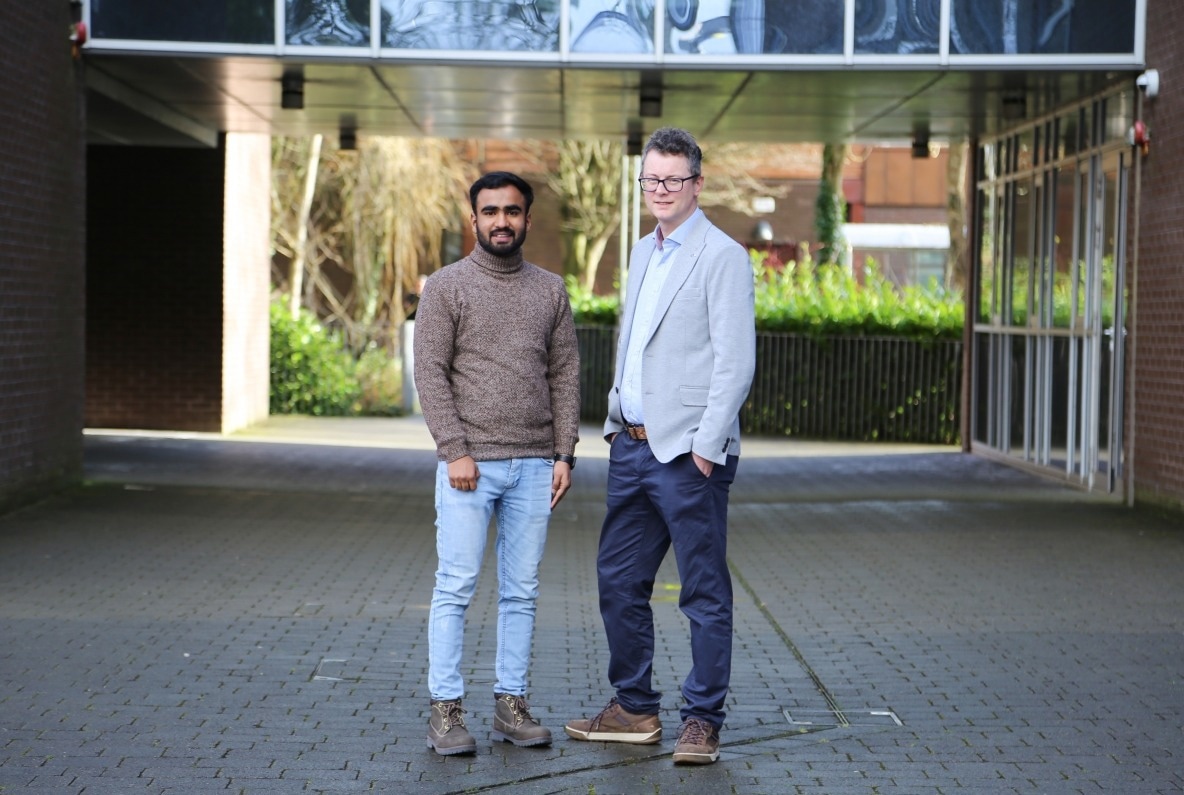Irish wood products could be used to efficiently transform waste heat into energy while minimizing costs and environmental impact, according to a new study by University of Limerick researchers.
 Muhammad Muddasar, a NXTGENWOOD PhD student based at the Bernal Institute with Professor Maurice N Collins, Professor of Materials Science in UL’s School of Engineering and Principal Investigator at the Bernal Institute. Image Credit: University of Limerick
Muhammad Muddasar, a NXTGENWOOD PhD student based at the Bernal Institute with Professor Maurice N Collins, Professor of Materials Science in UL’s School of Engineering and Principal Investigator at the Bernal Institute. Image Credit: University of Limerick
The groundbreaking study, conducted by UL researchers in association with University of Valencia colleagues, illustrated a technique for producing electricity from low-grade heat recovered from membranes made from lignin.
Often disregarded, lignin is a viable residue from pulp and paper manufacturing.
According to the study, these membranes can use the movement of charged atoms, or ions, within the material to transform waste heat into energy.
This is a major breakthrough because previous studies had only shown this technology's use in cellulose from natural wood; the current UL research has successfully applied it to lignin from waste wood, consequently supporting a more circular and sustainable economy.
Waste heat produced at temperatures lower than 200 degrees Celsius is referred to as low-grade heat. This category includes 66% of waste heat from industrial operations, underscoring the potential of this discovery for creating long-term uses for heat-to-electricity.
The Department of Agriculture, Food, and the Marine provided funding for the NXTGENWOOD research, which was published in the Journal of Advanced Functional Materials.
Low-grade heat comes from various sources like waste heat in industries, heat losses in insulating systems, ocean thermal gradients, biomass fermentation, and solar heat. Despite its potential, utilizing low-grade thermal energy in energy harvesting applications has been challenging due to the lack of cost-effective technologies. Our research explores the use of ionic thermoelectric membranes made from lignin, an underutilized by-product in the paper and pulp industry, offering a sustainable solution.
Maurice N Collins, Professor, Materials Science, School of Engineering, University of Limerick
Study lead author Muhammad Muddasar, a NXTGENWOOD PhD student based at the Bernal Institute, added, “We have developed the first lignin-based membrane for ionic thermoelectric energy harvesting. Our membrane is lightweight, easy to synthesize, and biocompatible, making it suitable for various applications, including thermal energy harvesting, temperature sensing, and biomedical sensors for health monitoring.”
The UL researcher’s work on the NXTGENWOOD project is part of the Centre for Advanced Materials and BioEngineering Research (AMBER), which is financed by the Science Federation Ireland. The goal of the initiative is to create novel applications for Irish wood that offer value addition.
Collins concluded, “While there is still room for further development in heat-to-electricity conversion applications, the study demonstrates that abundantly available lignin can successfully contribute to low-grade thermal energy harvesting, especially in scenarios where sustainability and cost-effectiveness are crucial.”
Journal Reference:
Muddasar, M., et. al. (2024) Lignin-Derived Ionic Conducting Membranes for Low-Grade Thermal Energy Harvesting. Advanced Functional Materials. doi:10.1002/adfm.202306427